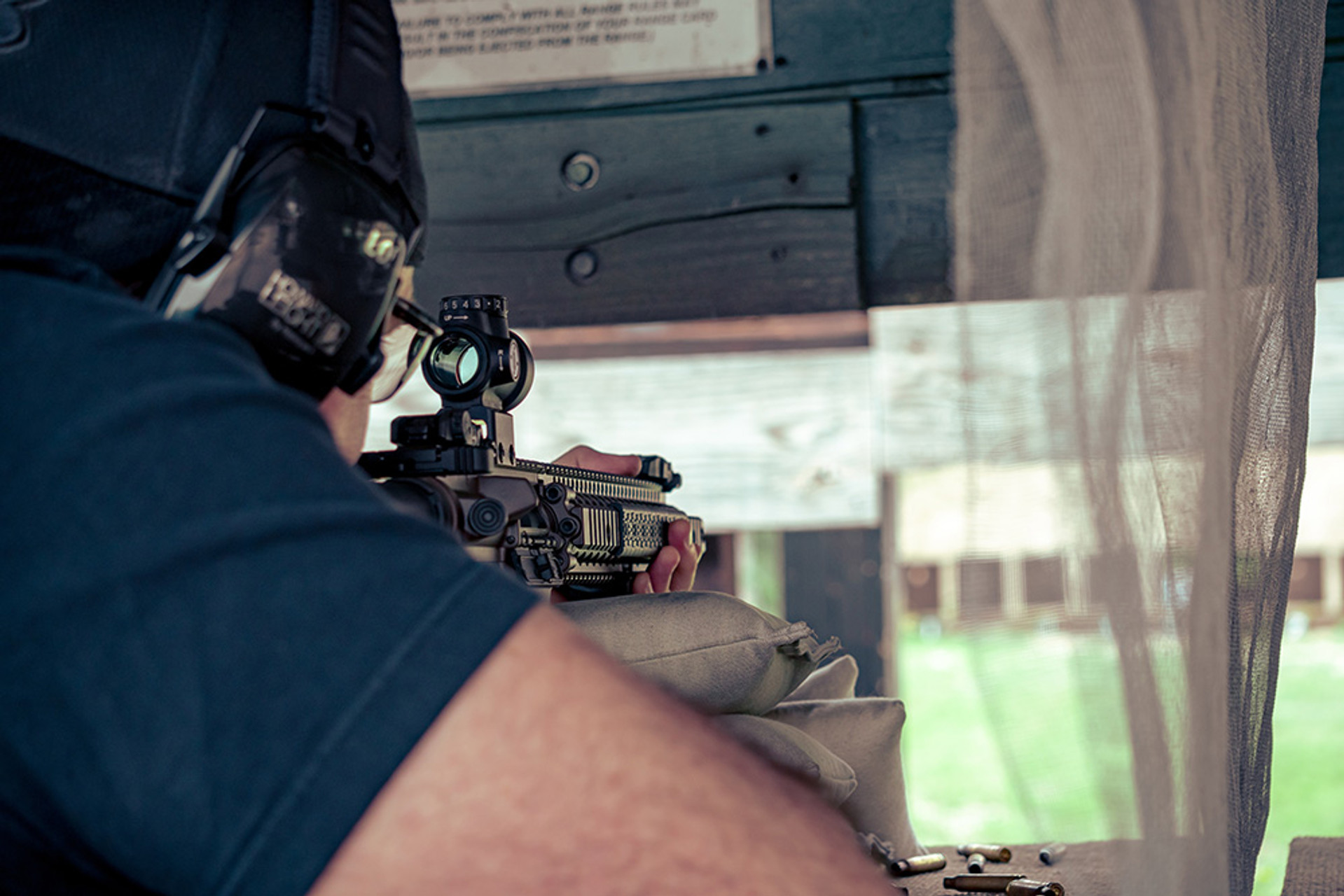Muzzle Velocity — Why it's important!
We’ve all heard about muzzle velocity in the shooting world - especially when choosing which ammo to buy. Is muzzle velocity actually an important thing to consider when choosing the right ammo for your gun though? Read on to find out!
What is Muzzle Velocity?
The definition of muzzle velocity is the speed of a projectile the moment it leaves the barrel after being fired. This is usually measured in feet-per-second (fps) and determines the power of the gun. Factors that can affect muzzle velocity include: Bullet grain, cartridge power, and barrel length. Shooting requires putting thought into a lot of different factors including ballistics and muzzle velocity is the beginning of determining bullet ballistics.
Muzzle Velocity Variables
There are many variables to consider when looking at muzzle velocity, but let’s focus on the main three.
Bullet Weight
Bullet weight is what you will see on the side of a box of ammo, where it will give you the grain of the bullet itself. Bullet weight refers to the bullet’s mass and weight. For example, most 9mm bullets are usually between 115 grain to 124 grain. Lighter bullets are faster, heavier bullets are slower, but less affected by environmental factors, such as wind.
Barrel Length
Barrel length of your firearm comes into play when determining muzzle velocity as well. When the cartridge fires, the explosive force of the propellant propels the round out of the weapon. The longer the bullet is in the barrel, the more force behind the bullet, increasing acceleration. Length of the barrel is important for knowing the distance your weapon can consistently land shots on target. Longer barrels increase the dwell time, allowing more pressure to expel the bullet which is necessary for longer ranges.
Propellant
Propellant is the powder that ignites when the striker hits the primer. More propellant in the cartridge, the greater the explosive force behind the bullet as it exits the muzzle. The pressure of the explosion caused by the propellant increases the muzzle velocity of the bullet.
Why Muzzle Velocity Matters
There are many reasons why muzzle velocity is important to shooters. It is very important to know how your bullet will behave at different distances. No matter if you are shooting a 9mm pistol or an AR-15 rifle, muzzle velocity will be a beneficial bit of knowledge to know. One way we believe is best to determine the best ammunition to shoot through your weapon is a basic understanding of ballistics, but the best way will always be shooting different types of ammunition through your weapon to see what the weapon will perform best while using! Knowing your ammunition and weapon will help you consistently put shots exactly where you want them to go.
Accuracy
A Bullet traveling at a higher velocity will drop less over longer distances which is an important factor to the accuracy of the bullet. Because the bullet will be flying at faster speeds, a higher muzzle velocity also will reduce the time of flight. Less time in flight equals less time for external factors such as wind and gravity to affect the bullet. This means that a faster velocity also will hold a straighter trajectory of said bullet.
9mm Ballistic chart. Source: AR15.com
Terminal performance is exactly what it sounds like, the performance of the bullet when it strikes its’ target. Terminal performance describes a projectile’s performance when it hits a target, and its’ ability to damage the target. Faster bullet speeds create a greater transfer of energy which affects how the bullet penetrates the target, expands, or both. The faster something hits something else, the more damage it will do.
9mm Muzzle Velocity
Given that 9mm is one of the most popular handgun calibers, we would be remiss not to discuss the caliber specifically. 9mm is an extremely flat shooting round within 50 yards making it a fantastic close-range and self-defense round. Factory loaded 9mm rounds are very commonly available with 115, 124 and 147 projectiles. Muzzle velocities (depending on barrel length) can be found from the high 900 feet per second range into the 1200 FPS range. 9mm bullets have a great amount of speed leaving your standard carry-size or duty-gun barrel and terminal performance in close ranges is deadly.
AR15 Muzzle Velocity
The AR-15 is America’s rifle. These rifles are readily available and you can even build them yourself (check out our AR-15 Build kits here)! Remember that barrel length has a direct impact on the muzzle velocity of the bullet you are shooting, as mentioned above. Because of this muzzle velocities for your AR-15 can vary greatly. Remember that larger bullets have a lower velocity when searching for the perfect round for your AR-15. It is also worth noting that the AR-15 operates on a gas system, so your propellant will really matter. More pressurized gas means more velocity when used properly. Sound complicated? It is to some degree, but don’t overthink it. Go shoot and see what works best for the ranges and types of shooting you are doing! Check out the chart below for more info!
AR-15 Barrel Velocities. Source: theprepperinsider.com
Build your next AR15 with 5D Tactical!
Thanks for reading this brief introduction to ballistics and more specifically, muzzle velocities. We hope it was helpful and appreciate you spending a bit of your day with us. Remember, when you are ready to start upgrading that handgun or AR-15, 5D tactical has a great stock of some of the best accessories in the game! Check out some of our AR-15 upgrades here! Have a great day and enjoy your freedom!






